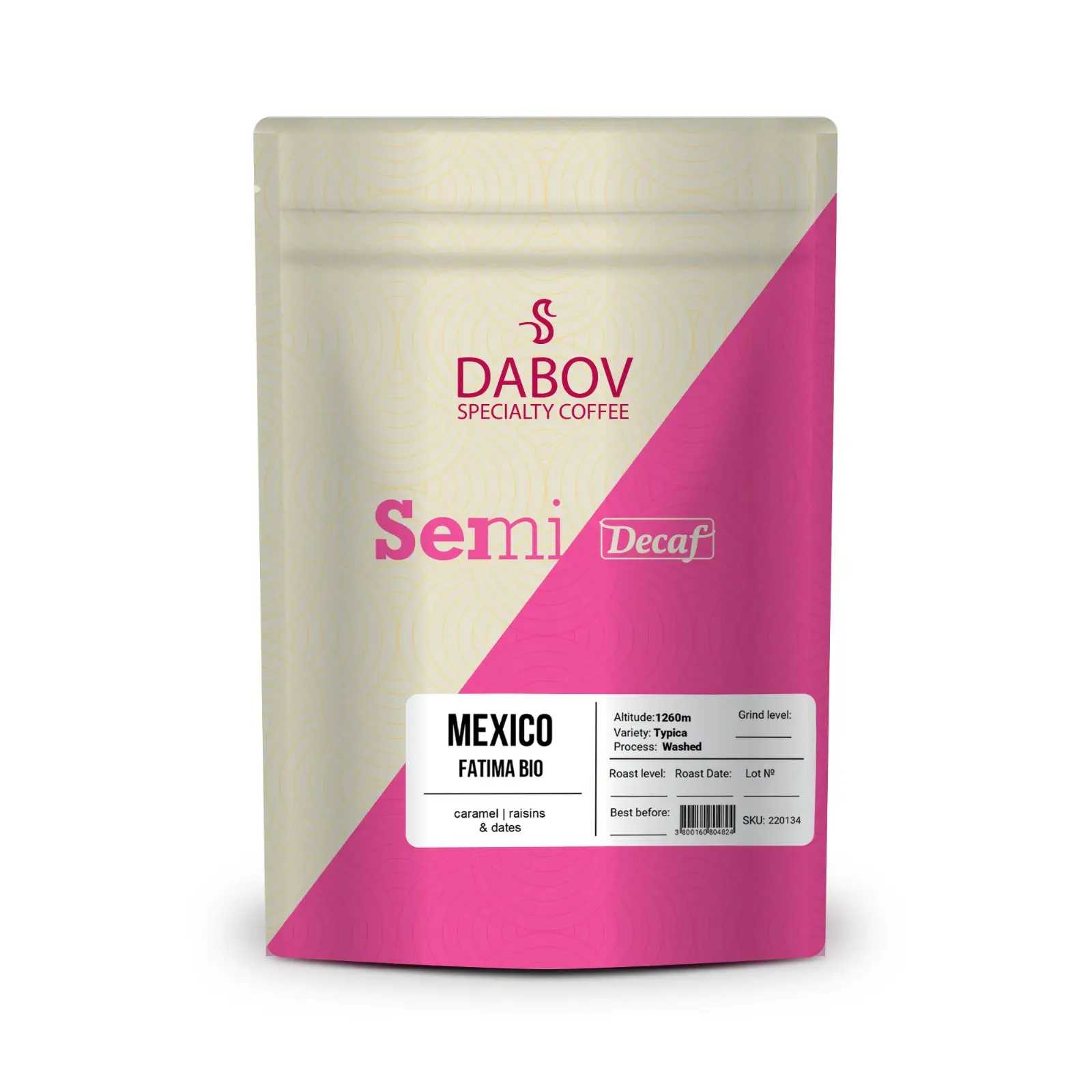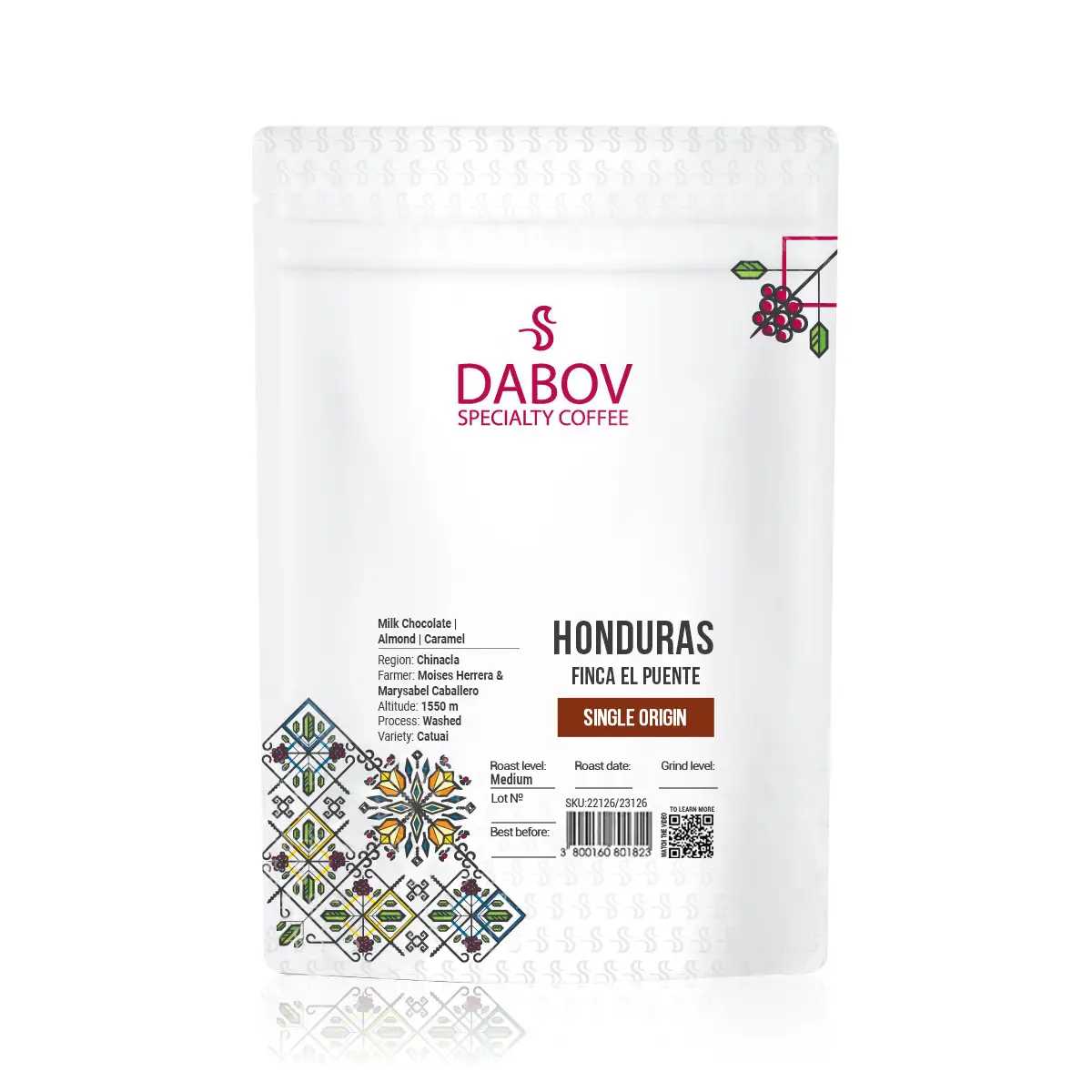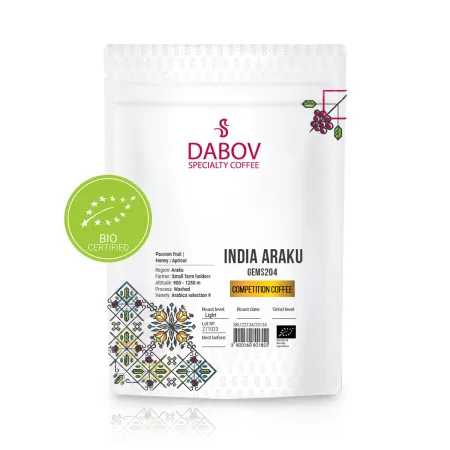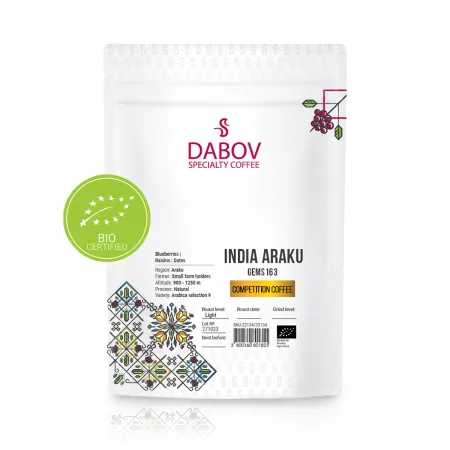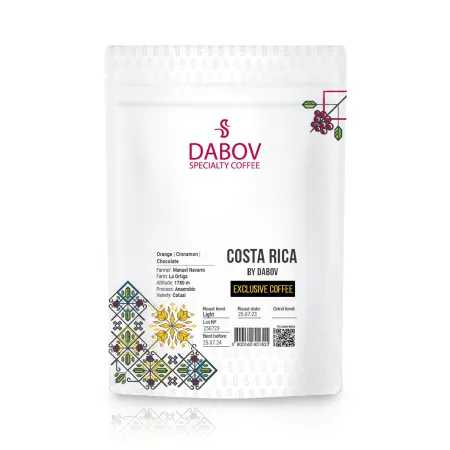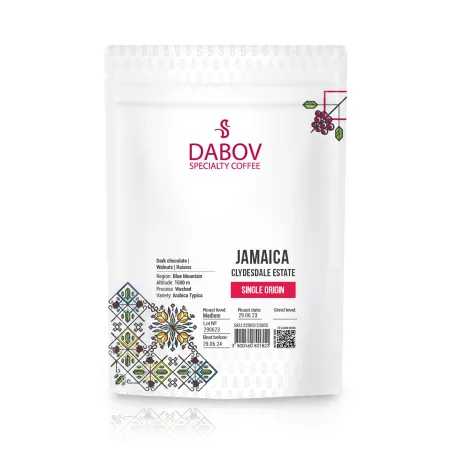Harvesting Coffee How Timing Affects Quality
Timing is everything in coffee harvesting. The right moment to pick coffee cherries can significantly impact the taste and quality of your brew. Understanding how seasonal changes, cherry maturity, and harvesting methods affect coffee can elevate your appreciation for this beloved beverage. Dive into the science of coffee quality and explore the delicate balance between early and late harvesting. Learn practical tips for identifying peak ripeness, and discover farming strategies that lead to exceptional coffee production. Whether you're a coffee aficionado or a budding barista, this guide will enhance your knowledge and experience of coffee.
I. Introduction
Coffee, the beloved beverage that fuels millions of people worldwide, is not just a simple drink but a complex product of nature and human expertise. At the heart of every exceptional cup of coffee lies a crucial process that often goes unnoticed by consumers: the art and science of coffee harvesting. The timing of this harvest plays a pivotal role in determining the quality of the final product, influencing everything from flavor profiles to aroma complexity.
Coffee harvesting is a meticulous process that requires a deep understanding of the coffee plant's lifecycle, environmental factors, and the subtle nuances that contribute to the bean's flavor development. The moment a coffee cherry is plucked from the branch can make the difference between a mediocre cup and an extraordinary sensory experience. This timing is not just about picking when the fruit looks ripe; it's about understanding the intricate balance of sugars, acids, and other compounds within the cherry that will ultimately translate into the coffee's taste.
As we delve deeper into the world of coffee harvesting, we'll explore how the precise timing of this crucial step can elevate or diminish the quality of coffee. From the lush hillsides of Colombia to the volcanic soils of Hawaii, coffee farmers around the globe are engaged in a delicate dance with nature, striving to capture the perfect moment when their crop reaches its peak potential. This article will unravel the complexities of coffee harvest timing, shedding light on why it's a critical factor in producing the high-quality coffee that connoisseurs and casual drinkers alike have come to appreciate and expect.
II. Understanding Coffee Harvest Timing
A. What is Coffee Harvest Timing?
Coffee harvest timing refers to the precise period during which coffee cherries are picked from the plants to ensure optimal quality and flavor. This concept goes far beyond simply choosing a date on the calendar; it involves a nuanced understanding of the coffee cherry's maturation process and the ability to recognize the exact moment when the fruit has reached its peak ripeness.
The timing of the harvest is crucial because coffee cherries do not ripen uniformly, even on the same branch. This variability means that farmers must be vigilant and selective in their approach to harvesting. The ideal harvest time occurs when the majority of cherries on a plant have reached what is known as the "peak of ripeness" – a state where the sugars, acids, and other flavor compounds within the fruit are perfectly balanced.
Understanding coffee harvest timing requires knowledge of the coffee plant's physiology and the environmental factors that influence its growth. Farmers must consider factors such as altitude, temperature, rainfall patterns, and soil composition, all of which can affect the rate at which coffee cherries mature. Additionally, different coffee varieties may have varying maturation rates, adding another layer of complexity to the timing decision.
Experienced coffee farmers often develop an intuitive sense for harvest timing, honed through years of observation and practice. They learn to recognize subtle changes in the color and texture of the cherries, as well as other indicators of ripeness that may be specific to their particular growing region or coffee variety. This expertise is crucial, as even a slight miscalculation in timing can result in significant changes to the coffee's final flavor profile.
B. The Role of Seasons
The seasonality of coffee harvesting is a fundamental aspect of coffee production that varies significantly across different growing regions worldwide. Unlike some crops that have a uniform growing season, coffee harvesting periods can differ dramatically depending on geographical location, climate patterns, and even microclimates within specific areas.
In general, coffee-growing regions experience two main types of harvesting patterns: single annual harvest and multiple harvests. Countries closer to the equator, such as Colombia and Kenya, often have two flowering seasons due to consistent rainfall patterns, resulting in two main harvest periods. In contrast, regions further from the equator, like Brazil or Hawaii, typically have one primary harvest season per year.
The timing of these seasons is critical for coffee quality. For instance, in Central America, the harvest typically occurs between November and March, coinciding with the dry season. This timing is crucial because it allows for easier cherry picking and processing without the interference of excessive rainfall. In Ethiopia, the birthplace of coffee, the main harvest season runs from October to December, but some regions may continue harvesting until March.
Climate change has begun to impact these traditional harvest seasons, causing shifts in flowering and ripening times. This phenomenon has forced farmers to adapt their practices and become even more attuned to environmental cues rather than relying solely on historical harvest dates.
Understanding these seasonal variations is essential for coffee buyers and roasters as well. It allows them to anticipate when fresh crop coffees will be available and plan their purchasing and roasting schedules accordingly. For consumers, this knowledge can provide insight into why certain coffees may taste fresher or be more readily available at different times of the year.
C. Harvesting Techniques
The method of harvesting coffee cherries is intrinsically linked to timing and plays a significant role in determining the final quality of the coffee. There are two primary harvesting techniques used in coffee production: selective picking and strip picking. Each method has its own implications for harvest timing and resultant coffee quality.
Selective picking, also known as hand-picking, is considered the superior method for producing high-quality coffee. This technique involves manually harvesting only the ripe cherries, leaving unripe ones on the branch to mature further. Pickers return to the same trees multiple times throughout the harvest season, selecting only the cherries at their peak ripeness. This method requires skilled labor and is more time-consuming and expensive, but it allows for precise control over the quality of harvested cherries.
The timing for selective picking is crucial. Pickers must be trained to recognize the exact color and firmness that indicate optimal ripeness, which can vary depending on the coffee variety. For example, some Arabica varieties turn a deep red when ripe, while others may have a more yellowish hue. The ability to discern these subtle differences ensures that only the highest quality cherries are harvested.
Strip picking, on the other hand, involves removing all cherries from the branch in one go, regardless of their ripeness stage. This method is faster and more economical but can result in a mix of unripe, ripe, and overripe cherries. Strip picking is more commonly used in regions with uniform ripening or for varieties that ripen more evenly. It's also employed in areas where labor costs are high or where mechanized harvesting is possible.
The timing for strip picking is based on when the majority of cherries on the plants have reached ripeness. Farmers must carefully monitor their crops to determine the optimal moment when the highest percentage of cherries are ripe, minimizing the inclusion of unripe or overripe fruit. This requires a delicate balance, as waiting too long can result in a significant portion of overripe cherries, while harvesting too early can lead to an abundance of underdeveloped fruit.
Some farms employ a hybrid approach, using selective picking for their highest quality lots and strip picking for the remainder of their crop. This strategy allows them to maximize quality where it matters most while still maintaining efficiency in their overall harvest.
Regardless of the method used, proper timing remains paramount. Even with strip picking, understanding the ripening patterns of the coffee plants and timing the harvest correctly can significantly impact the quality of the final product. As we delve deeper into the science of coffee quality, we'll see how these harvesting techniques and their timing directly influence the chemical composition of the coffee bean and, ultimately, the cup quality.
III. The Science of Coffee Quality
A. Factors Influencing Coffee Quality
The quality of coffee is a complex interplay of numerous factors, each contributing to the final sensory experience in the cup. Understanding these elements is crucial for both producers aiming to cultivate exceptional coffee and consumers seeking to appreciate the nuances of their brew.
One of the primary factors influencing coffee quality is the genetic makeup of the coffee plant itself. Different varieties of coffee, such as Bourbon, Typica, or Gesha, have inherent flavor characteristics that form the foundation of the coffee's taste profile. These genetic traits interact with environmental factors to produce unique flavor compounds within the coffee cherry.
Terroir, a concept borrowed from wine production, plays a significant role in coffee quality. This encompasses the environmental conditions in which the coffee is grown, including altitude, soil composition, temperature, and rainfall patterns. Higher altitude coffees, for instance, often develop more complex flavor profiles due to slower maturation, which allows for greater accumulation of sugars and acids in the cherry.
The cultivation practices employed by farmers also significantly impact quality. Factors such as shade management, pruning techniques, and fertilization strategies can all influence how the coffee plant develops and, consequently, the characteristics of its fruit. Organic and sustainable farming practices can contribute to soil health and biodiversity, which in turn can enhance coffee quality.
Processing methods, which occur after harvesting, are another crucial factor in determining coffee quality. Whether the coffee is processed using the washed, natural, or honey method can dramatically alter its flavor profile. Each method affects how the sugars and other compounds in the coffee cherry interact with the bean during fermentation and drying, leading to distinct taste characteristics.
Roasting is yet another critical stage that influences coffee quality. The roasting process transforms the green coffee beans, developing flavors and aromas through complex chemical reactions. The skill of the roaster in bringing out the best qualities of the bean while avoiding defects is paramount to the final cup quality.
Finally, brewing methods and water quality play roles in how the inherent qualities of the coffee are extracted and presented in the cup. Even the most exceptional coffee can be diminished by poor brewing techniques or subpar water quality.
B. The Impact of Maturity on Quality
The maturity level of coffee cherries at the time of harvest is perhaps one of the most critical factors influencing the final quality of the coffee. As coffee cherries ripen, they undergo significant chemical changes that directly affect the flavor compounds within the bean.
During the maturation process, the composition of sugars, organic acids, and other flavor precursors within the coffee cherry evolves. Immature cherries typically have higher levels of chlorogenic acids and lower sugar content, which can result in coffee with pronounced acidity and astringency, often described as having grassy or vegetal notes. As the cherry ripens, these acids begin to break down, and sugars accumulate, leading to a more balanced and sweeter flavor profile.
One of the key indicators of ripeness is the development of fruit sugars within the cherry. These sugars are essential for the formation of desirable flavor compounds during processing and roasting. Ripe cherries have a higher Brix level (a measure of sugar content), which contributes to the sweetness and body of the final coffee.
The lipid content of coffee beans also changes as the cherry matures. Lipids play a crucial role in the mouthfeel and flavor retention of coffee. Fully mature cherries typically have a higher lipid content, which can result in a coffee with better body and a more lingering aftertaste.
Moreover, the development of aromatic compounds reaches its peak as the cherry fully ripens. These volatile organic compounds are responsible for much of the complex aroma profile that coffee enthusiasts prize. Harvesting at peak ripeness ensures that these aromatics are at their most developed stage, contributing to a more nuanced and pleasing sensory experience.
It's worth noting that the concept of "peak ripeness" can vary depending on the desired flavor profile and the specific processing method to be used. For instance, some specialty coffee producers may choose to harvest slightly earlier to achieve a brighter, more acidic profile, while others might allow for slightly more ripening to enhance sweetness and body.
The impact of maturity on quality underscores the importance of precise harvest timing. Picking cherries at their optimal ripeness ensures that the full potential of the coffee's flavor profile is captured, setting the stage for exceptional quality throughout the subsequent stages of processing, roasting, and brewing.
IV. Coffee Harvest Impact on Quality
A. The Consequences of Early Harvesting
Harvesting coffee cherries before they have reached their optimal ripeness can have significant negative impacts on the quality of the final product. While there may be circumstances that force farmers to harvest early, such as impending adverse weather conditions or labor shortages, understanding the consequences of this practice is crucial for both producers and consumers.
One of the primary issues with early harvesting is the underdevelopment of sugars within the coffee cherry. Immature cherries have not had sufficient time to convert their starches into the complex sugars that contribute to the sweetness and body of the coffee. This can result in a cup that tastes flat, lacks depth, and may have an unpleasant astringency.
The acidity profile of under-ripe cherries is another concern. While acidity is a desirable trait in coffee when balanced, immature cherries often have higher levels of chlorogenic acids and other harsh organic acids. These can lead to a coffee that tastes overly sour, sharp, or even metallic. The pleasant, bright acidity that coffee connoisseurs appreciate is typically achieved when cherries are allowed to ripen fully, allowing for a more balanced acid profile.
Aromatics, which play a crucial role in the overall sensory experience of coffee, are also underdeveloped in early-harvested cherries. The complex aromatic compounds that give coffee its enticing scent and contribute to its flavor are formed during the later stages of ripening. Coffee from under-ripe cherries may lack these nuanced aromatics, resulting in a less engaging and one-dimensional cup.
From a processing perspective, early-harvested cherries can be more challenging to work with. The mucilage layer, which is crucial for fermentation in certain processing methods, is not fully developed in immature cherries. This can lead to inconsistencies in fermentation and drying, potentially introducing off-flavors or defects in the coffee.
Furthermore, the physical structure of the coffee bean itself is affected by early harvesting. Immature beans tend to be smaller and denser, which can lead to uneven roasting. This can result in a mix of under-roasted and over-roasted beans within a single batch, contributing to inconsistent flavor in the cup.
Early harvesting can also impact the longevity of the coffee's quality. Green coffee from immature cherries tends to degrade more quickly during storage, losing flavor and developing unpleasant characteristics more rapidly than coffee from fully ripened cherries.
B. The Consequences of Late Harvesting
While early harvesting can lead to underdeveloped flavors, allowing coffee cherries to remain on the plant too long past their peak ripeness can be equally detrimental to quality. Late harvesting presents its own set of challenges and potential flavor defects that can significantly impact the final cup profile.
One of the primary concerns with late harvesting is over-fermentation. As coffee cherries become overripe, they begin to ferment on the branch. This process can introduce undesirable flavors often described as winey, alcoholic, or even rotten. These off-flavors can be particularly pronounced in natural or dry-processed coffees, where the cherry remains intact during the drying process.
The sugar content in overripe cherries can also become problematic. While sugars are essential for developing desirable flavors, an excess can lead to a coffee that tastes overly sweet or cloying. This can mask the more subtle flavor notes and result in a less balanced cup profile.
Acidity, a key component of coffee's flavor profile, can diminish significantly in overripe cherries. The bright, crisp acidity that adds liveliness to the cup may be replaced by a flatter, duller taste. This loss of acidity can make the coffee taste muted or lacking in complexity.
Another issue with late harvesting is the increased risk of defects. Overripe cherries are more susceptible to fungal growth, insect infestation, and physical damage. These factors can introduce serious defects into the coffee, such as mold or phenol taints, which can render entire batches unusable.
From a processing standpoint, overripe cherries can be challenging to handle. They tend to be softer and more prone to damage during picking and processing. This can lead to inconsistencies in fermentation and drying, potentially introducing further quality issues.
The physical characteristics of the bean can also be affected by late harvesting. Overripe cherries may produce beans that are larger and less dense than those from optimally ripe cherries. This can lead to roasting challenges, as these beans may roast more quickly and unevenly, potentially resulting in scorched flavors or inconsistent development.
Moreover, late harvesting can impact the overall yield and efficiency of the harvest. Overripe cherries are more likely to fall from the plant, leading to waste and potential quality issues if they are collected from the ground. This can also attract pests and diseases, potentially affecting the health of the entire coffee plantation.
It's worth noting that in some cases, a slight degree of over-ripeness can be desirable for certain flavor profiles or processing methods. For instance, some natural processed coffees benefit from a controlled level of over-ripeness to develop their characteristic fruity and complex flavors. However, this requires careful management and expertise to execute successfully without introducing negative qualities.
The consequences of both early and late harvesting underscore the critical importance of timing in coffee production. Achieving the right balance requires a deep understanding of the coffee plant, local environmental conditions, and the specific requirements of different processing methods. As we move into the next section on the coffee timing guide, we'll explore practical strategies for identifying and achieving this optimal harvest window.
V. Coffee Timing Guide
A. Identifying the Right Harvesting Time
Determining the optimal moment for harvesting coffee cherries is a skill that combines scientific knowledge with practical experience. Farmers and pickers must rely on various indicators to ensure they are harvesting at the peak of ripeness, maximizing quality potential.
Visual inspection is one of the primary methods for assessing cherry ripeness. The color of the cherry is a key indicator, with most Arabica varieties turning a deep, rich red when fully ripe. However, it's important to note that some varieties may have different color indicators. For example, some yellow varieties of coffee turn a golden yellow when ripe rather than red. Farmers must be intimately familiar with the specific color changes associated with their coffee varieties.
Beyond color, the texture and firmness of the cherry provide crucial information about its ripeness. Ripe cherries should feel plump and slightly soft when gently squeezed, with a slight give that indicates the development of sugars and other compounds within. Overripe cherries will feel too soft and may easily squish when pressed.
The ease with which cherries can be removed from the branch is another physical indicator of ripeness. Ripe cherries will detach from the stem with relatively little force, while unripe cherries will cling more tightly to the branch. This characteristic is particularly useful in selective picking, allowing pickers to quickly identify which cherries are ready for harvest.
Some farmers employ more technical methods to assess ripeness. Refractometers, which measure the sugar content of the cherry's pulp, can provide a quantitative measure of ripeness. A Brix reading (a scale used to measure sugar content) can help farmers determine when cherries have reached their optimal sugar levels for harvesting.
The uniformity of ripening across the coffee plant is another factor to consider. While cherries on a single plant do not all ripen simultaneously, experienced farmers look for a high percentage of ripe cherries before beginning the harvest. This balance ensures that the majority of harvested cherries are at their peak quality while minimizing the inclusion of under or overripe fruit.
Timing considerations also extend to the broader context of the harvest season. Farmers must be attuned to weather patterns and forecasts, as prolonged rainfall during harvest can lead to quality issues. In some cases, farmers may need to accelerate their harvest plans to avoid incoming adverse weather conditions.
The altitude at which coffee is grown can significantly impact ripening times, with higher elevation coffees generally maturing more slowly. This factor must be taken into account when planning harvest schedules, especially on farms with varying elevations.
Some innovative farmers are beginning to employ technology to aid in harvest timing decisions. Satellite imagery and drone surveillance can provide valuable data on crop development across large areas, helping farmers identify when different sections of their farm are reaching optimal ripeness.
B. The Importance of Climate Monitoring
Climate monitoring plays a crucial role in determining the optimal coffee harvest timing. The intricate relationship between climate conditions and coffee cherry maturation makes it essential for farmers to closely observe and analyze weather patterns throughout the growing season.
Temperature is one of the most critical climatic factors affecting coffee ripening. Ideal temperatures for Arabica coffee typically range between 60°F to 70°F (15°C to 21°C). Prolonged exposure to temperatures outside this range can accelerate or delay ripening, potentially leading to quality issues. Farmers must monitor daily temperature fluctuations and long-term trends to anticipate how these changes might affect their harvest timeline.
Rainfall patterns are equally important in the timing equation. Adequate rainfall during the growing season is crucial for proper cherry development. However, as the harvest season approaches, drier conditions are generally preferred. Excessive rainfall during the ripening phase can lead to cherries splitting or becoming waterlogged, which can negatively impact flavor and increase the risk of fungal growth. Monitoring precipitation levels and forecasts helps farmers plan their harvest to avoid periods of heavy rainfall.
Humidity levels also play a role in coffee cherry development and can influence the onset of diseases that might affect ripening. High humidity can promote the growth of coffee leaf rust and other fungal diseases, which can stress the plant and impact cherry maturation. Farmers in humid regions must be particularly vigilant in monitoring these conditions and may need to adjust their harvest timing accordingly.
Wind patterns are another climatic factor that can influence harvest timing. Strong winds can cause cherries to fall prematurely or damage branches, potentially forcing farmers to begin harvesting earlier than ideal. Understanding local wind patterns and monitoring for unusual wind events can help farmers make informed decisions about when to start their harvest.
The concept of "degree days" is increasingly being used in coffee agriculture to predict harvest timing. This method involves calculating the cumulative heat exposure of the coffee plants over time, which can provide a more accurate estimate of when cherries will reach maturity. By monitoring temperature data throughout the growing season, farmers can use degree day calculations to fine-tune their harvest planning.
Climate change has introduced new challenges in harvest timing, making consistent monitoring even more critical. Shifts in traditional weather patterns, increased frequency of extreme weather events, and overall warming trends are altering coffee growing conditions worldwide. Farmers must now be more adaptable in their approach to harvest timing, relying on real-time climate data rather than historical norms.
Advanced weather monitoring technologies are becoming increasingly accessible to coffee farmers. Weather stations equipped with sensors for temperature, rainfall, humidity, and wind speed can provide detailed, localized climate data. Some farms are even integrating these systems with predictive models to generate harvest timing recommendations based on current and forecasted conditions.
Collaboration with meteorological services and agricultural extension agencies can provide farmers with access to more comprehensive climate data and expert interpretations. This information can be particularly valuable for understanding larger weather systems that might impact harvest conditions.
By closely monitoring climatic conditions and understanding their impact on coffee cherry maturation, farmers can make more informed decisions about harvest timing. This attention to climate not only helps ensure optimal coffee quality but also allows farmers to adapt to changing environmental conditions, ultimately contributing to more sustainable and resilient coffee production practices.
VI. Best Practices for Quality Coffee Production
A. Integrating Timing with Cultivation Techniques
The integration of proper harvest timing with effective cultivation techniques is essential for producing high-quality coffee consistently. This holistic approach considers the entire lifecycle of the coffee plant, from planting to harvesting, ensuring that each stage contributes to the ultimate goal of exceptional cup quality.
One of the fundamental aspects of this integration is pruning practices. Proper pruning not only maintains plant health but also influences how evenly cherries ripen across the plant. By managing the plant's structure and removing excess growth, farmers can promote more uniform flowering and cherry development. This uniformity makes it easier to determine the optimal harvest time for the majority of cherries on a plant or within a specific plot.
Soil management plays a crucial role in both plant health and cherry development. Balanced nutrition through appropriate fertilization practices ensures that coffee plants have the resources they need to produce high-quality cherries. The timing of fertilizer applications can be coordinated with the plant's growth cycle and expected harvest dates to optimize nutrient availability during critical periods of cherry development.
Irrigation strategies, where applicable, can be fine-tuned to support optimal cherry maturation. Controlled water stress during certain phases of cherry development can enhance flavor compounds, but this requires careful monitoring and timing to avoid negatively impacting yield or quality. In regions with distinct dry seasons, the timing of the last irrigation before harvest can influence cherry ripening rates and final flavor profiles.
Shade management is another cultivation technique that intersects with harvest timing. The level of shade can affect how quickly cherries ripen and the uniformity of ripening across a plantation. Farmers may adjust shade levels as the harvest season approaches to promote more even ripening or to slightly accelerate or delay maturation based on their harvest plans.
Pest and disease management strategies must also be integrated with harvest timing considerations. The application of any treatments should be carefully timed to ensure that there are no residues present at harvest time. Additionally, understanding the lifecycle of common pests and diseases in relation to the coffee plant's growth stages can help farmers implement preventative measures that protect quality without interfering with harvest timing.
Some farmers are experimenting with techniques to influence flowering times, which in turn affects harvest timing. This can involve manipulating irrigation patterns or applying growth regulators to induce more synchronized flowering across a plantation. While these techniques require careful management, they can lead to more uniform ripening and simplified harvest planning.
The selection and maintenance of coffee varieties also play a role in this integrated approach. Different varieties may have varying ripening times and characteristics. By carefully selecting and potentially interplanting varieties with complementary ripening schedules, farmers can extend their harvest window while still maintaining peak quality for each variety.
Record-keeping and data analysis are crucial components of integrating timing with cultivation techniques. By meticulously tracking farming practices, weather conditions, and harvest outcomes over multiple seasons, farmers can refine their approaches and develop more accurate predictions for future harvests.
Advanced agricultural technologies are increasingly being employed to support this integration. Precision agriculture techniques, such as remote sensing and GIS mapping, can help farmers identify variations in plant health and cherry development across their farms. This information can be used to tailor cultivation practices and harvest timing to specific microclimates within a plantation.
B. Case Studies of Successful Timing in Coffee Production
Examining real-world examples of coffee producers who have mastered the art of harvest timing provides valuable insights into the practical application of the principles we've discussed. These case studies illustrate how attention to timing, combined with innovative cultivation techniques, can lead to exceptional coffee quality.
Case Study 1: Finca El Injerto, Guatemala
Finca El Injerto, located in Huehuetenango, Guatemala, has gained international recognition for its high-quality coffees, particularly its Gesha variety. The farm's success is largely attributed to its meticulous approach to harvest timing.
The farm employs a team of skilled pickers who are trained to identify the exact shade of deep red that indicates peak ripeness for their Gesha cherries. They use a color chart to ensure consistency across the team. Harvesting is done in multiple passes, sometimes up to 10 times per tree, to ensure only the ripest cherries are picked.
El Injerto also utilizes micro-climate data to inform their harvest timing. The farm is equipped with weather stations that monitor temperature, humidity, and rainfall. This data is correlated with cupping scores from previous years to refine their understanding of how climatic conditions impact flavor development.
The result of these efforts is evident in the cup. El Injerto's coffees consistently score above 90 points in international competitions, with complex flavor profiles that showcase the full potential of their high-altitude Gesha crops.
Case Study 2: Ninety Plus Gesha Estates, Panama
Ninety Plus Gesha Estates in Panama has revolutionized coffee production with its innovative approach to harvest timing and processing. The estate's founder, Joseph Brodsky, developed a method called "Thermal Shock Fermentation" which is intricately linked to precise harvest timing.
The process begins with extremely selective picking, where only the ripest cherries are harvested. The timing of this harvest is crucial, as the cherries must be at a specific stage of ripeness for the thermal shock process to be effective.
Immediately after harvesting, the cherries undergo rapid cooling, followed by a carefully controlled fermentation process. This method, combined with precise harvest timing, has resulted in coffees with extraordinarily complex flavor profiles, often featuring distinct notes of jasmine, bergamot, and tropical fruits.
Ninety Plus coffees have broken price records at auctions, with some lots selling for over $5,000 per pound. This success demonstrates the profound impact that innovative timing and processing techniques can have on coffee quality and value.
Case Study 3: Hacienda La Esmeralda, Panama
Hacienda La Esmeralda, famous for rediscovering the Gesha variety and bringing it to international prominence, has a unique approach to harvest timing that takes advantage of their varied terrain.
The farm spans a range of altitudes, from 1,400 to 1,800 meters above sea level. Rather than harvesting all at once, they time their harvest to coincide with the optimal ripeness at each elevation. This staggered approach allows them to capture peak quality across their entire production.
La Esmeralda also employs a technique they call "ripeness testing," where small batches of cherries are harvested and processed at different stages of ripeness. These samples are then cupped to determine the optimal picking time for each plot.
This attention to detail in harvest timing has contributed to La Esmeralda's consistent success in the Cup of Excellence competitions and their ability to command premium prices for their coffees.
Case Study 4: Daterra Coffee, Brazil
Daterra Coffee in Brazil presents an interesting case study in how large-scale production can still prioritize precise harvest timing for quality. As one of the largest specialty coffee producers in the world, Daterra faces unique challenges in maintaining consistent quality across vast areas of cultivation.
The farm utilizes advanced technology to monitor crop development and determine optimal harvest times. Satellite imagery and drone surveillance are used to track the ripening process across different sections of the farm. This data is combined with on-the-ground observations to create detailed harvest maps.
Daterra has also developed a unique harvesting system that combines mechanical and manual picking. Mechanical harvesters are used for the initial pass, followed by teams of skilled hand-pickers who select only the ripest cherries. This hybrid approach allows them to maintain precise control over harvest timing while managing the scale of their operation.
The farm's commitment to timing extends to their processing methods as well. They use a proprietary system called "Penta" which involves five stages of sorting and selection, ensuring that only perfectly ripe cherries make it to the final product.
Daterra's approach demonstrates how technology and innovation can be applied to harvest timing even in large-scale operations, resulting in consistently high-quality coffee.
These case studies illustrate the diverse approaches to harvest timing across different scales and regions of coffee production. Whether through meticulous hand-picking, innovative processing techniques, elevation-based harvesting, or technologically-assisted large-scale operations, these producers have shown that careful attention to timing is a crucial factor in producing exceptional coffee. Their successes provide valuable lessons and inspiration for coffee producers worldwide who aim to elevate the quality of their product through precise harvest timing.
VII. Conclusion
The journey through the intricacies of coffee harvest timing reveals its profound impact on the quality of coffee. From the science behind cherry maturation to the practical challenges of determining the perfect moment for harvest, it's clear that timing is not just a small factor but a cornerstone of producing exceptional coffee.
We've explored how the precise moment of harvest affects the development of sugars, acids, and aromatic compounds within the coffee cherry, all of which contribute to the final flavor profile in the cup. The consequences of both early and late harvesting have been examined, highlighting the delicate balance that must be struck to achieve optimal quality.
The integration of harvest timing with broader cultivation techniques emerges as a key strategy for consistent quality production. Successful coffee producers, as seen in our case studies, demonstrate that attention to timing, combined with innovative approaches and sometimes cutting-edge technology, can lead to remarkable results in cup quality and market value.
Climate monitoring and adaptation to changing environmental conditions have been underscored as increasingly critical components of effective harvest timing. As the coffee industry faces the challenges of climate change, the ability to accurately predict and respond to optimal harvest windows will become even more crucial.
For coffee professionals, from farmers to roasters and baristas, understanding the importance of harvest timing provides valuable insights into the origins of coffee quality. This knowledge can inform decisions throughout the supply chain, from crop management to green coffee selection and roasting profiles.
For coffee enthusiasts and consumers, awareness of harvest timing adds another layer of appreciation to their coffee experience. It highlights the skill and dedication required to produce high-quality coffee and underscores the importance of supporting producers who prioritize these practices.
As we look to the future of coffee production, it's clear that harvest timing will continue to play a pivotal role in the pursuit of quality. Ongoing research and technological advancements promise to further refine our understanding and control of this critical aspect of coffee cultivation.
In conclusion, the timing of coffee harvesting is not just a matter of scheduling but a complex interplay of science, skill, and environmental factors. It is a testament to the artistry involved in coffee production and a key determinant of the quality that ultimately reaches our cups. As the coffee industry continues to evolve, the mastery of harvest timing will remain a distinguishing factor between good coffee and truly exceptional coffee.
VIII. Additional Resources
A. Recommended Reading
For those interested in delving deeper into the subject of coffee harvest timing and related topics, the following resources are recommended:
- "The World Atlas of Coffee: From Beans to Brewing - Coffees Explored, Explained and Enjoyed" by James Hoffmann
- This comprehensive guide covers various aspects of coffee production, including harvesting practices across different regions.
- "Coffee: Growing, Processing, Sustainable Production" edited by Jean Nicolas Wintgens
- A detailed handbook that provides in-depth information on coffee cultivation, including harvest timing and its impact on quality.
- "The Coffee Exporter's Guide" by the International Trade Centre
- While focused on the business aspects of coffee, this guide includes valuable information on quality standards and harvesting practices.
- "Modelling Carbon and Water Balances for Coffee Plantations" by Bruno Rapidel et al.
- A more technical resource that explores the environmental factors affecting coffee growth and harvesting.
- "The Craft and Science of Coffee" edited by Britta Folmer
- This book offers a scientific perspective on various aspects of coffee production, including chapters relevant to harvest timing and quality.
B. Expert Interviews and Testimonials
"In my experience, the difference between good coffee and exceptional coffee often comes down to harvest timing. It's not just about picking red cherries; it's about understanding the subtle changes in the fruit day by day. We've found that even a difference of a few days can significantly alter the flavor profile." - Maria Rodriguez, Head Agronomist at a prominent Costa Rican coffee cooperative.
"Climate change has made traditional harvest calendars almost obsolete. We now rely heavily on real-time data and predictive models to determine optimal harvest windows. It's challenging, but it's also pushing us to innovate in ways that ultimately benefit coffee quality." - Dr. Aaron Davis, Senior Research Leader at the Royal Botanic Gardens, Kew.
"The relationship between harvest timing and processing method is something we're continually exploring. We've found that slightly different levels of ripeness can be optimal depending on whether we're doing washed, natural, or honey processing. It's a complex interplay that requires constant experimentation and refinement." - Alejandro Cadena, CEO of Caravela Coffee.
These additional resources and expert insights provide further avenues for exploration into the nuanced world of coffee harvest timing, offering both practical knowledge and scientific depth for those looking to expand their understanding of this crucial aspect of coffee production.



